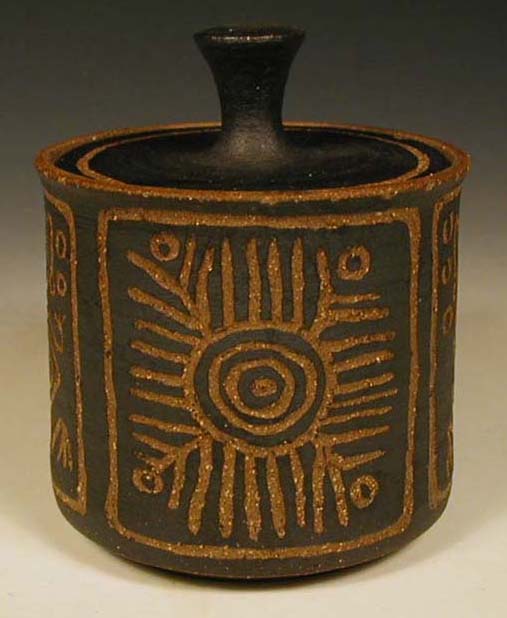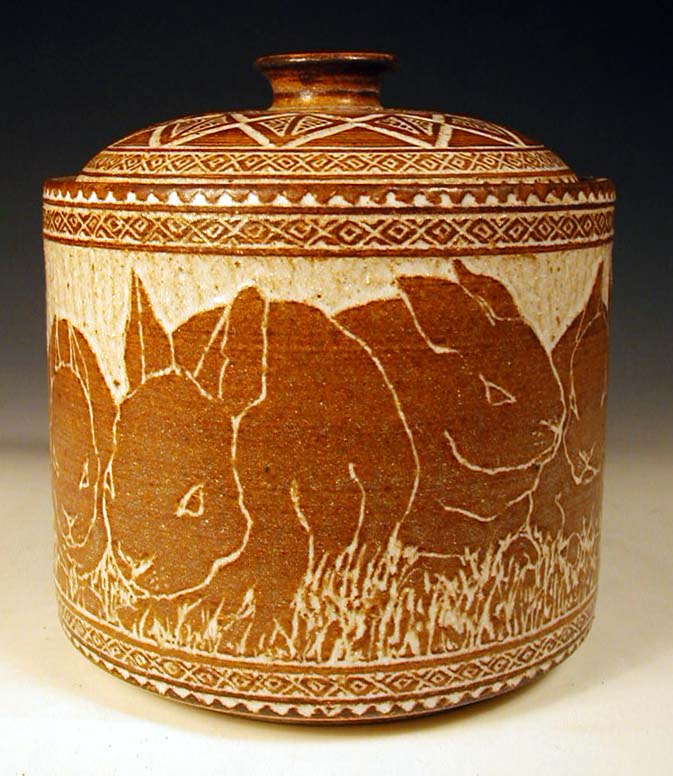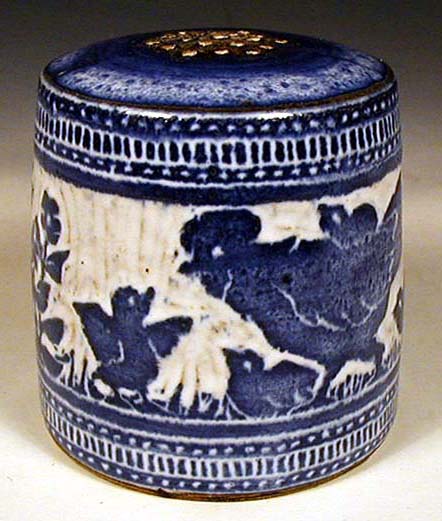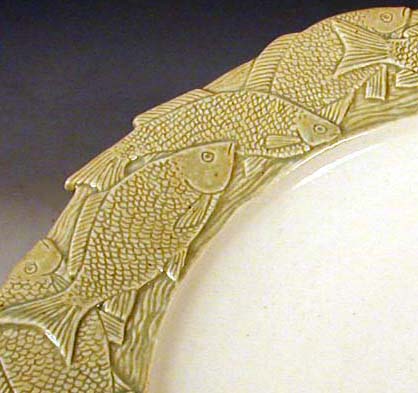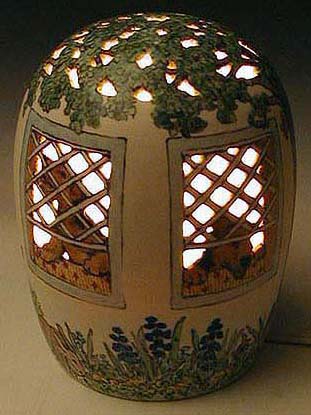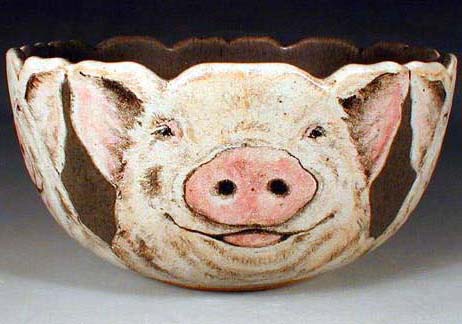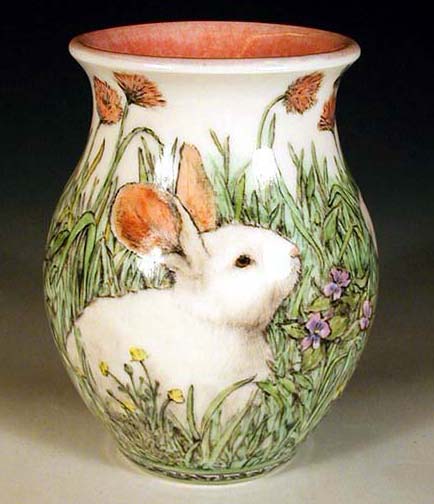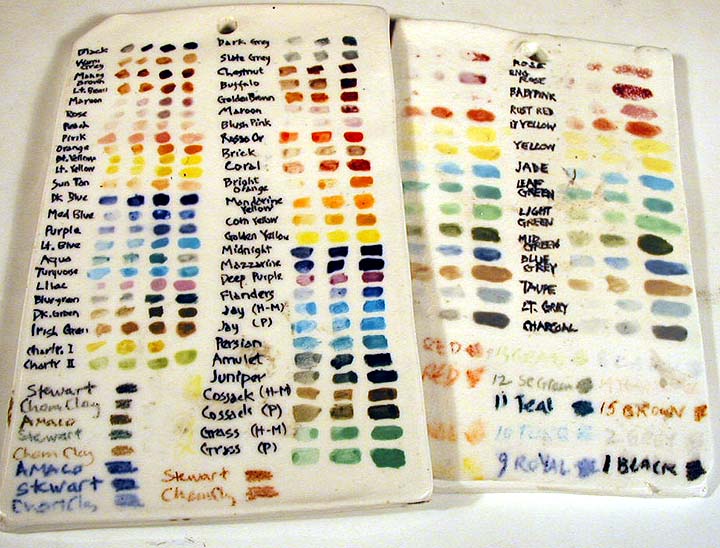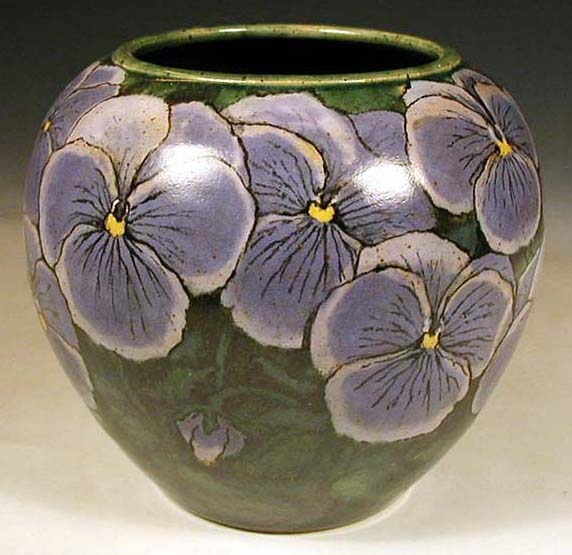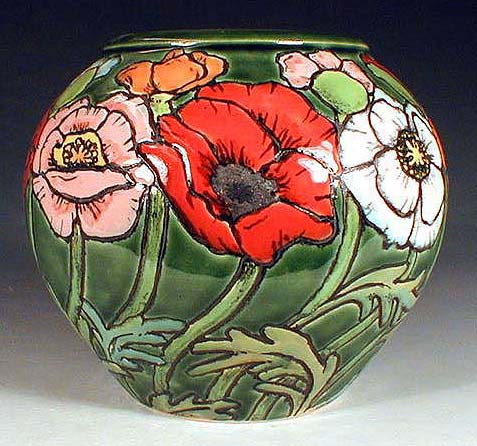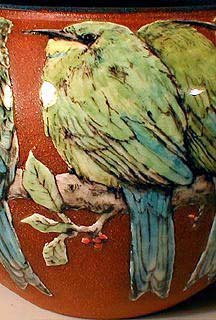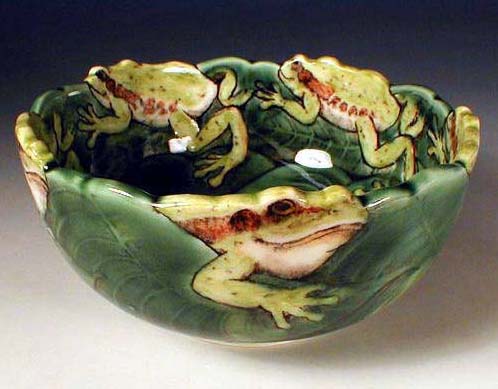
Another dimension can be added by masking areas of the pot either with wax resist, latex resist, masking tape, or commercial stickers. Sometimes it's simplest to dip the pot in glaze, then remove the glaze from the desired area with a needle tool and clean with a damp Q-tip. This frog pot has been carved, painted (the frogs), latex applied around them, dipped in transparent, waxed over the transparent, dipped in green, then painted to define the leaves. This pot was completely planned out even before I sat down to throw.
|
